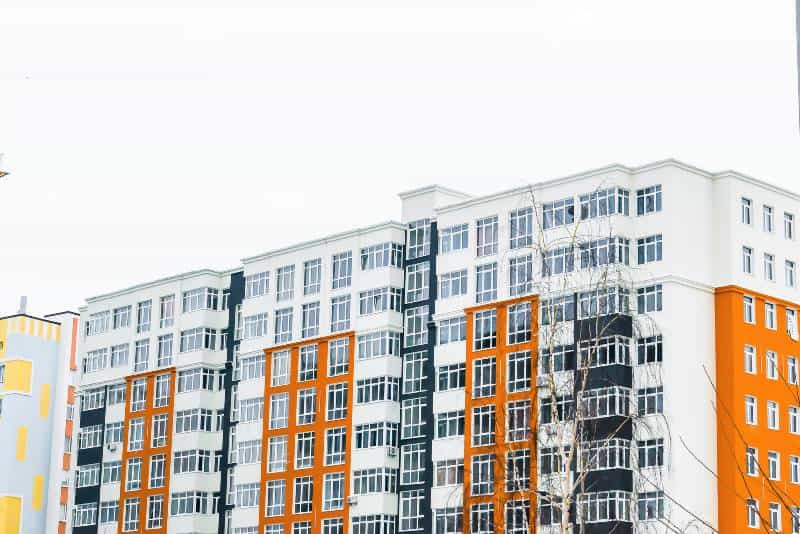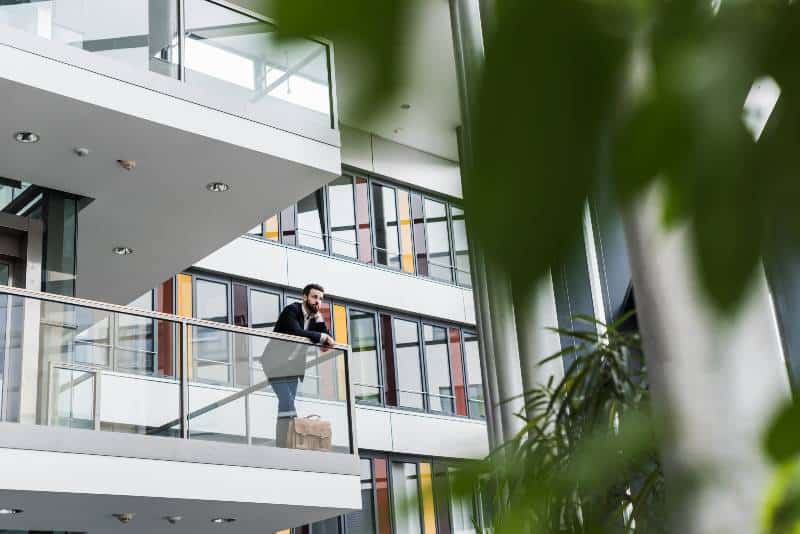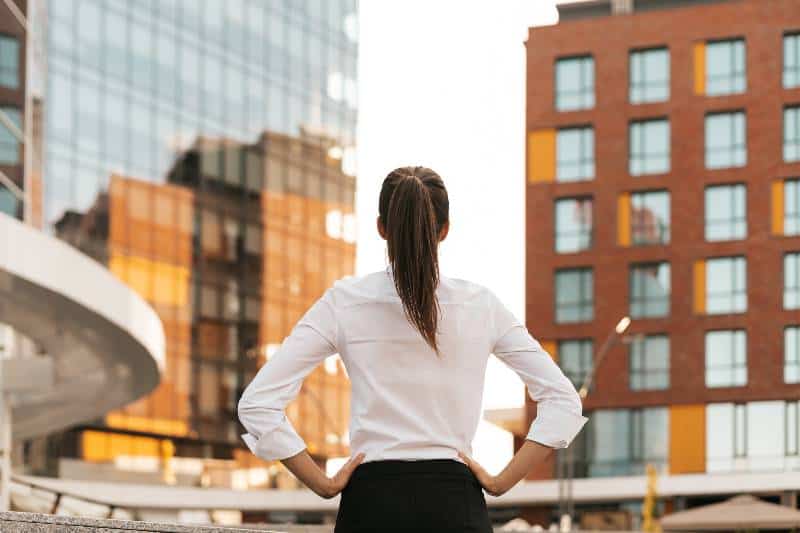As our world continues to urbanize, cities and communities face a unique set of challenges. One key challenge is how to plan out mixed-use developments in urban cores that are both sustainable and beneficial for the people who inhabit them. Mixed-use development branding brings together multiple uses – such as residential spaces, retail space, office space, entertainment venues, and public facilities – into one cohesive package within an urban setting.
These integrated neighborhoods can contribute to strong economic growth and provide enhanced opportunities for residents by creating vibrant communities with parks, transportation options, and other amenities. With so many benefits associated with this type of development project, we will explore why mixed-use development projects have become increasingly popular in large city centers.
Mixed-use projects are transforming cities, creating lively spaces where people live, work, and play. With the World Health Organization study predicting that 70% of people will be city dwellers by 2050, these smart developments offer a blueprint for efficient, enjoyable urban living as our cities grow.
Key Takeaways
- Mixed-use developments pave the way for multifunctional, sustainable city design, by integrating commercial, residential, and recreational facilities.
- Future trends in mixed-use development aimed at creating more livable urban centers, with a focus on community connection, convenience, smart technologies, and environmentally friendly practices.
- Despite potential challenges, innovative solutions are emerging to make mixed-use developments the default in future urban planning and design, which entails reshaping our approach to city living and our understanding of urban spaces.
Table of Contents

Rising popularity of mixed-use developments
Mixed-use developments are becoming increasingly popular in urban centers, attracting significant interest from investors, city planners, and residents alike. This growing trend represents a shift in urban planning that leans towards integrating residential, commercial, and recreational spaces into shared building complexes.
A compelling study underscoring this trend is that between 2010 and 2020, mixed-use development accounted for nearly 50 percent of new commercial and multi-family development delivered.
This figure is indicative of a broader shift towards mixed-use projects over traditional, single-use developments, with the trend showing no signs of slowing down. In fact, current data from ongoing projects in the Pipeline suggest that this preference is even more pronounced, with mixed-use developments approaching 60 percent of total new development.
This architecture trend is partially a response to the growing demand for compact, walkable neighborhoods that offer accessibility, convenience, and a sense of community. Mixed-use developments, which often include office spaces, retail businesses, entertainment hubs, and housing units within the same complex, offer just that.
Also, A recent survey by the National Association of Realtors (NAR) surveyed over 3,000 adults residing in the 50 biggest urban markets to get a closer look at their transportation preferences. The study showed that the vast majority of Americans prefer walkable communities. Research also shows that more than 50 percent of Americans would either walk or bike instead of driving if they had the choice.
The Increasing Interest in Mixed-Use Developments
Modern city dwellers are developing a preference for an all-encompassing lifestyle that minimizes commute times, increases leisure opportunities, and enhances social interaction. As a result, the preference for mixed-use developments is on the rise. Investors and developers, recognizing this trend, are increasingly focusing on creating spaces that provide a blend of residential, commercial, and recreational amenities within a single development.
Cities that are keen on combating urban sprawl, reducing commute times, and creating more vibrant, community-centric neighborhoods are finding mixed-use developments to be an effective solution.
Benefits of Mixed-Use Developments to Urban Dwellers and the Local Economy
For urban dwellers, the primary benefits of mixed-use development lie in the convenience it offers. Proximity to work, shopping, and entertainment options creates a more balanced and efficient lifestyle. Not only does this reduce the need for extended commutes, it also fosters a stronger sense of community and place.
For the local economy, having commercial spaces within these developments can boost economic activity. Retailers, restaurateurs, and other businesses gain access to a ready market of consumers residing in the same development or nearby. This keeps money circulating within the local economy and supports job creation.
Additionally, mixed-use developments can also contribute to higher municipal revenues through real estate taxes, making them a win-win situation for both urban dwellers and the local economy.
Transforming urban living
Mixed-use developments represent more than just a structural change in our urban centers; they are transforming the very nature of city living. They foster a harmonious fusion of living, work, and recreational spaces, reinventing the concept of community and togetherness.
Consider the example of The Pearl in San Antonio, Texas, or The Wharf in Washington, D.C. Both represent successful mixed-used developments that have redefined urban living.
The Pearl, once a 19th-century brewery, today features a range of apartments, an amphitheater, a hotel, a handful of restaurants and shopping establishments, and even a branch of the Culinary Institute of America. It serves as a hotspot for both locals and tourists, offering a lively and integrated lifestyle where all of their needs and comforts are within a short walking distance.
On the other hand, The Wharf, located along a mile-long stretch of the Potomac River, offers residents and visitors a distinctive, resort-like lifestyle within the city. Full of a range of housing options, world-class restaurants, local retailers, and a marina, it has swiftly morphed into a vibrant waterfront community, proving that urban living can be synonymous with a luxurious, convenient lifestyle.
Impact on Urban Lifestyle and Convenience
The convergence of residential, commercial, and entertainment spaces in mixed-use developments significantly impacts urban lifestyles by providing a high degree of convenience. The ‘live-work-play’ mixed-use urban design of these developments ensures that workplaces, homes, and recreational spaces coexist, often within walking distance or a short elevator ride from each other. This diminishes the need for long commutes, saving city dwellers valuable time and reducing their carbon footprint.
Residing in a mixed-use development often means having a supermarket, gym, café, office space, and even parks within the same block. This proximity to necessary amenities transforms the urban lifestyle, making it more community-centered and environment-friendly.
Mixed-use developments, by creating closer-knit communities and providing convenience, are successfully reinventing and redefining the concept of urban living. They exemplify how urbanization and convenience can be beautifully harmonized to create vibrant, engaging, and sustainable living spaces.
Sustainability and environmental impact
The design of mixed-use developments inherently supports sustainable urban living. By consolidating residential, commercial, and recreational spaces within a single development, there is less need for transportation. This not only reduces individual carbon footprints but also mitigates vehicular air pollution, contributing to cleaner city air.
Another sustainable feature of these developments is their efficient use of land. Given that the same land parcel is used for multiple purposes, this development model reduces the pressure on urban sprawl – one of the significant drivers of environmental degradation.
The buildings in mixed-use developments are also increasingly being designed to harness the power of renewable energy sources like solar and wind and use energy-efficient fixtures and appliances. They often incorporate green spaces and sometimes even urban farming, which not only enhances biodiversity but also contributes to the local food supply.
Connection to Smart City Initiatives
The mixed-use development concept aligns perfectly with ‘Smart City’ initiatives. In essence, Smart Cities are all about leveraging technology and data-driven strategies to enhance the efficiency, sustainability, and livability of urban areas.
Mixed-use developments offer the perfect platform for deploying this kind of strategy. Here, innovative technologies can be used to manage resources efficiently, minimize waste, and optimize energy use. For example, consider OneC1TY in Nashville, Tennessee, a health and technology-focused mixed-use development incorporating smart utilities, an open-access Gigabit internet, and a focus on creating a healthy, active community.
Further, smart technologies in mixed-use developments can improve traffic management, boost the delivery of city services like waste disposal and street lighting, and ensure tighter security within the complex.
In conclusion, mixed-use developments are not only bridging the gap between residential and commercial spaces, but they are also leading the way in sustainable urban living and integration of Smart City technologies, making our cities more suitable for future generations.
Emerging trends and future outlook
As mixed-use development projects continue to transform urban centers across the globe, we witness the introduction of new design trends and innovative approaches that will shape the future of urban living. Let’s explore these upcoming trends and envision the urban landscape they will create.
Upcoming Designs and Trends in Mixed-Use Developments
- Vertical Integration: As cities become denser, architects and planners are now designing vertically integrated mixed-use developments. These projects often incorporate residential, retail, and office spaces stacked on different levels within the same structure. As a result, vertical mixed-use spaces maximize land-use efficiency, reduce the building’s environmental footprint, and bring distinct functions together in close proximity.
- Flexible Spaces: The increasing demand for adaptable spaces has become central to modern mixed-use projects. A focus on designing spaces that can be easily reconfigured for various purposes, such as co-living/co-working or multi-generational living, speaks to the ever-evolving needs of urban dwellers.
- Incorporation of Green Spaces: Green spaces have become increasingly important in mixed-use developments, as they enhance the overall quality of life, promote social interaction, and contribute to the local mixed-use urban environments. Designs featuring green roofs, vertical gardens, and expansive parks are now widely embraced by developers.
- Digital Connectivity: The importance of integrating smart technology throughout mixed-use developments has become apparent in the age of the Internet of Things (IoT). These smart mixed-use projects incorporate high-speed internet, connected devices, and various digital services to enhance security, efficiency, and comfort.
- Mobility-focused Design: With urban mobility becoming a significant focus area, many developments now prioritize walking, biking, and electric vehicle infrastructure. This emphasizes a more sustainable and efficient transportation approach that reduces the need for private vehicles and contributes to cleaner air.
Imagining the Future of Urban Centers
Taking these mixed-use design trends into consideration, it’s possible to imagine a future where urban centers cater to every aspect of life seamlessly. They feature bustling, walkable, and bike-friendly neighborhoods, with beautifully designed vertical buildings that combine residential, work, and leisure spaces within the same structure.
Community-driven and connected through IoT, these urban centers prioritize sustainability, with an abundance of green spaces and integrated renewable energy infrastructure.
Furthermore, we can envision vibrant urban centers that epitomize a rich sense of place and belonging, offering residents a connected, environmentally conscious, and convenient lifestyle in a cohesive community. This is the future of mixed-use developments in urban centers, and it has already begun to unfold before our eyes.
Challenges and potential solutions
Despite their increasing popularity and numerous benefits, developing mixed-use buildings is not without its challenges.
Common Obstacles
- Zoning and Regulatory Issues: Traditional zoning laws often separate commercial and residential uses, which is a hurdle for mixed-use development projects.
- Cost Considerations: Mixed-use developments usually involve higher construction and operational costs due to their complexity. Managing different uses within a single structure may also require greater upkeep and cause confusion among residents and commercial tenants about shared responsibilities and costs.
- Market Uncertainty: Market demand for each component of a mixed-use development may fluctuate. This makes creating the right balance of residential, commercial, and recreational spaces a challenging task.
Potential Solutions and Innovative Practices
- Revising Zoning Laws: Local governments can revise their zoning ordinances to support mixed-use developments or adopt a form-based code, which prioritizes building appearance and form over land use. This shift can accelerate the approval and implementation of mixed-use projects.
- Public-Private Partnerships (PPPs): These can act as a solution to financial challenges. Local municipalities can partner with developers to share costs and risks, creating a more financially viable scenario for mixed-use projects.
- Adaptive Reuse of Buildings: Another cost-effective solution is the adaptive reuse of existing buildings, as seen in the case of The Pearl in San Antonio, transforming a brewery into a thriving mixed-use complex.
- Phased Development Strategy: This strategy reduces market risk by developing parts of the project sequentially, which allows for adjustments based on market demand.
- Community Engagement: Engaging community members in the planning and decision-making process can ensure that the development caters to the residents’ needs while fostering a sense of ownership and minimizing potential conflicts.
With creative solutions and collaboration between various stakeholders, the challenges faced by mixed-use developments can be effectively addressed, accelerating their role in shaping our urban landscapes.

Showcasing Los Angeles’ Urban Transformation: A Closer Look at Mixed-Use Developments
Table: Key Mixed-Use Developments in Los Angeles
| Development Name | Location | Features | Impact on Community |
|---|---|---|---|
| The Bloc | Downtown Los Angeles | Office spaces, retail stores, restaurants, a hotel, public plazas. | Transformed an aging shopping mall into a bustling urban center, promoting walkability and community engagement. |
| The Arts District | Arts District | Residential lofts, galleries, creative businesses, restaurants, shops. | Revitalized a former industrial area into a vibrant community of artists and creatives. |
| Baldwin Hills Crenshaw Plaza | Baldwin Hills | Housing, retail, green spaces while preserving cultural significance. | Aims to revitalize the historic plaza, integrating housing and retail with the community’s cultural heritage. |
| Oceanwide Plaza | Adjacent to Staples Center | Residential units, Park Hyatt hotel, restaurants, retail spaces. | Offers luxury living and shopping next to a major entertainment venue, enhancing downtown’s appeal. |
| The Aliso | Arts District | Apartments, townhomes, ground-level retail. | Fosters community in one of LA’s trendiest neighborhoods, blending residential living with vibrant ground-floor activity. |
Key Considerations for Mixed-Use Development Investment:
- Location: Choosing the right location is critical for the success of mixed-use investments. The examples provided highlight areas with high foot traffic, proximity to cultural or entertainment hubs, and those undergoing revitalization or gentrification.
- Market Trends: Understanding the current market trends, such as demand for housing, retail or office space in specific areas, is essential. Areas experiencing revitalization, like the Arts District, may offer more growth potential.
- Demand Drivers: Factors such as proximity to employment centers, public transportation, cultural attractions, and amenities significantly influence the desirability and success of mixed-use developments.
- This table summarizes the dynamic landscape of mixed-use developments in Los Angeles, illustrating the variety of projects that cater to the city’s growing demand for integrated living, working, and recreational spaces. These developments not only enhance the urban fabric of Los Angeles but also provide valuable insights for investors looking to tap into the mixed-use real estate market.
Mixed-Use Developments in Urban Centers FAQs
What is a good example of mixed-use development?
Mixed-use development concepts typically encompass a variety of combinations, such as residential and office spaces, or residential and other commercial spaces. These properties are designed with convenient amenities on the main floor and apartments or condo units on the upper floors.
What is new urbanism and mixed-use development?
New Urbanism is a progressive movement that embraces practices and principles to foster vibrant and sustainable neighborhoods. It revolves around the idea of creating walkable, diverse, and densely populated communities. Key principles of New Urbanism encompass mixed-use development, transit-oriented development, walkability, inclusivity, diversity, and the prevention of placelessness.
Why is mixed-use development important?
Mixed-use development offers a multitude of environmental, economic, social, and health benefits that seamlessly align with existing community priorities. One such benefit is the promotion of physical activity, fostering an active lifestyle for individuals within the community.
What are the advantages of living in a mixed-use development?
Fosters a strong sense of community and belonging. Stimulates economic growth and investment. Enhances the optimal utilization of land and infrastructure. Directs development towards established areas, safeguarding the outskirts’ rural regions and environmentally delicate resources.
What is the social impact of Mixed use urban development?
An examination of U.S. metropolitan areas indicates that mixed-use development could enhance social cohesion and reduce perceived segregation for individuals with higher and middle incomes. However, it may diminish social cohesion and amplify perceived segregation for individuals with lower incomes.
Conclusion
As we have discussed, mixed-use developments are becoming increasingly prevalent in our cities and are proving their worth through the versatility and sustainability they offer. By designing urban centers around this new focus on livability, convenience, technology, and the environment, the full extent of these developments’ possibilities can be unlocked for everyone – homeowners, employers, and recreational facilities.
This may come with its own set of challenges, but they can be addressed if we commit to efficiency and a shared vision for future cities. Looking ahead to the future of urban planning and design requires us to rethink our approach to city life and what it means to inhabit an urban space.
If you’re considering making a real estate investment that applies many of these principles or if you simply need help in navigating this ever-evolving landscape with its array of options from residential living to commercial properties; Call or schedule a consultation that I offer which will provide invaluable insight into your decisions regarding your long-term real estate investments or purchases!




